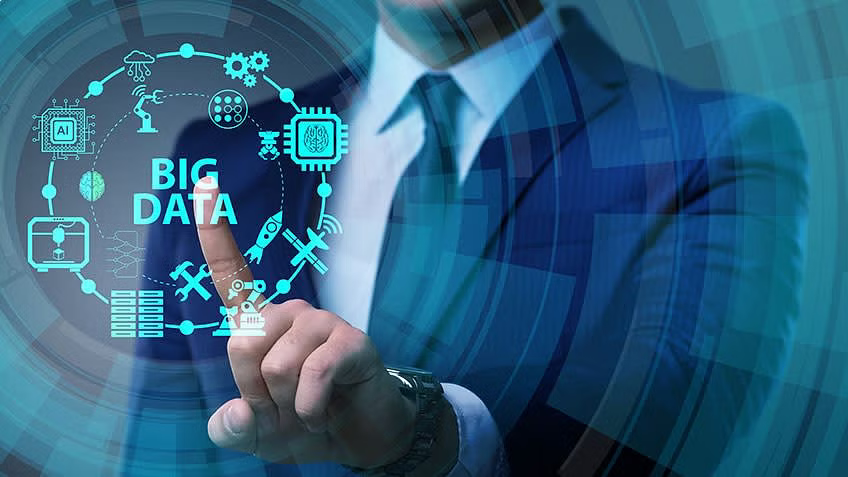
Proprietary, Confidential Info, Trade Secrets, Know-How—Differences for Business Success
Proprietary information is at the foundation of every successful business, and protecting all types of proprietary information is vital for commercial success. However, how to appropriately classify, and therefore effectively protect, different types of proprietary information can be confusing.
Many businesses mistakenly use the terms “proprietary,” “confidential,” trade secret,” and “know-how” synonymously. They are not interchangeable, and the differences can have tremendous legal consequences, particularly when the terms are used loosely or inconsistently. It is essential for businesses to understand how the law treats these critical information types to effectuate sufficient protective measures.
Proprietary Information
Proprietary information encompasses virtually anything a business uniquely does or creates. It includes corporate intellectual property with federal protections, such as patents, copyrights, and trademarks, as well as confidential information, know-how, and trade secrets. Proprietary information can include any type of unique data that businesses seek to protect, such as financial information, marketing information, research and development knowledge or manufacturing data. How a business treats and protects its proprietary information may qualify it for greater protection as “confidential” or “trade secret.”
Confidential Information
Confidential information includes internal proprietary information material to business operations that cannot be learned externally. It may encompass documents or physical objects, categories of documents, objects, physical areas, procedures, processes, marketing plans, payroll/personnel records, computer programs, and nearly anything else a business wishes to keep confidential. It can exist in many forms, including written, spoken, observed, or electronically stored information, and information that is not treated in accordance with stricter forms of proprietary information protection is still generally afforded common law protection.
Trade Secrets
Trade secrets encompass confidential information imparting substantial economic value to a business through an undisclosed competitive edge, such as Coca Cola’s secret formula. They enjoy statutory protection under federal and state law. They are licensable as intellectual property (in perpetuity), whereas confidential information is more generally treated as physical property that can be given and returned. Courts generally examine six factors to adjudicate trade secret status:
- The extent to which the information is known outside the business;
- The extent to which the information is known internally by employees and agents;
- The extent of measures taken to guard the information’s secrecy;
- The information’s value internally and to competitors;
- The amount of time, effort, and money expended to develop the information; and
- The ease or difficulty with which the information could be lawfully acquired or duplicated by others.
Businesses should use these six factors to evaluate their own confidential information and determine the appropriate level of protection needed. In general, there are four stages of trade secret asset management:
- Identification—regularly identify and review company trade secrets, documenting their secret status and the value they contribute. Conducting periodic audits of confidential information, protective measures undertaken, and protocols governing employee access can aid in identifying and eliminating security shortcomings. Misappropriation litigation often requires early identification of trade secrets and protective measures with reasonable particularity.
- Classification—determine which information warrants protection and the associated expense. Confidential information shared extensively internally generally requires fewer protective measures than a critical company secret. Treating these different information types similarly could inadvertently reduce a trade secret to confidential information, limiting available legal remedies if disclosed.
- Protection—educate all business units to embrace protection measures as a compliance issue with serious reputational, financial, and legal implications. Policies governing confidentiality marking may help reduce theft/misuse but can also create uncertainty if an unmarked confidential document is disclosed. Businesses must assess the practical likelihood that specific confidentiality marking policies will be followed, and potential real-world consequences that may result. Additional protective measures may include password-protection and regular discussions/trainings regarding the criticality of maintaining secrecy. Ultimately, trade secrets should only be disclosed on a need-to-know basis with a plan in place for any breaches, accidental or otherwise. Inadvertent disclosure of trade secrets can negate their protected status, limiting available legal remedies.
- Valuation—evaluate the “strength” of the trade secret, and ultimately the probability of future dependent cash flows. Trade secret economic value may critically influence all aspects of a company’s response following disclosure, up to and including litigation.
Legal remedies for trade secret misappropriation include injunctions (to prevent disclosure or misuse, or to enforce information destruction or return), disgorgement of profits earned through misuse, past damages, imposition of a royalty on future goods sold, punitive damages, and/or attorney fees. Both federal and state law typically allow for recovery of exemplary damages (up to twice the value of actual damages) for willful and malicious misappropriation. An increasingly common “avoided costs” theory of unjust enrichment requires a defendant to pay the research and development costs theoretically avoided by the misappropriation. See Caudill Seed & Warehouse v. Jarrow Formulas, No. 21-5345, (6th Cir. Nov. 10, 2022). However, secrecy can never be fully reinstated following disclosure, so businesses must carefully guard their critical secrets.
Know-How
Know-how generally refers to technical skills, including information, knowledge, techniques, and experiences, that are difficult to reduce to tangible form; it is often associated with trade secrets, but can include confidential or proprietary information. Know-how is licensable (in perpetuity) and can be a valuable intellectual property asset in a carefully drafted license. As state contract law principles generally govern know-how licenses, interpretations vary among courts. While licensed know-how may include trade secrets, know-how generally does not require the same type and level of protection as trade secrets for enforcement of a license. Commingling trade secret and know-how terms in a license, therefore, may unintentionally demote the trade secrets and eliminate potential misappropriation remedies. SeeBohler-Uddeholm America v. Ellwood Group, 247 F.3d 79, 107 (3d Cir. 2001).
In a patent licensing context, licensing particular “know-how” required to utilize a patented invention may extend the licensee’s competitive advantage beyond the time-limited license of the patent itself. Careful consideration is also required when drafting a know-how license in combination with any federal intellectual property right license(s), such as patent/know-how licenses. License grants, terms, and royalty schedules should be separately defined so that it is clear that royalties occurring after patent expiration are tied only to the know-how. See Kimble v. Marvel Entertainment, 135 S. Ct 2401 (2015).
Nondisclosure Agreements (NDAs)—Preventing Harmful Disclosure
Legal protection for confidential information stems from common law and equitable principles that a) businesses need secrets to stay competitive, and b) maintaining confidentiality is a moral imperative. NDAs additionally harness contract law to protect all forms of proprietary information. NDAs can be adapted for various parties, specific goals, and even particular state jurisdictions. NDAs may be unilateral, e.g., outlining employee confidential information access during and post-employment, or bilateral, e.g., between businesses collaborating on a project, merger, or sale. When drafting or reviewing an NDA:
- Identify Relevant Parties: define the disclosing party and recipient. Also consider additional potential parties, such as accountants and business partners.
- Specify Confidentiality: define all relevant proprietary information. Most NDA breaches occur through misunderstanding, not dishonesty, and are often avoidable with clearly defined parameters. Covering vast categories of information with general definitions is inappropriate; such clauses are typically not upheld. As noted, treating trade secrets as general confidential information may reduce statutory protections available. Define any specific exclusions clearly, such as prior information or public knowledge. Employees must specifically understand what may be disclosed and under what conditions to avoid inadvertent disclosure to the public domain. Businesses should track what and when information is disclosed, such as through databases, record-keeping systems, or document check-out systems.
- Identify Obligations: define specific protection requirements in the agreement and determine how onerous they may be, such as requiring every information custodian to sign separate NDAs or to exercise a particular level of caution. Identical contract terms may be a necessity in one situation but a restrictive burden in others. Noncompete and nonsolicitation terms are frequently included in NDAs; it is prudent to be aware of these terms, particularly in light of recent FTC efforts to restrict the future use of non-compete agreements.
- Duration: define how long secret information must be protected, depending upon the type of business, transaction, and information. Consider how long after the termination of the relationship/project the secrecy obligations should be maintained.
- Information Return: define whether confidential information intentionally disclosed for business purposes must subsequently be returned or destroyed, automatically or by request, and what confirmation is required.
Remedies for Breach: Consider at the outset the best course of action if a receiving party breaches an NDA. A valid NDA may provide for monetary damages or an injunction against a breaching party, but an invalid NDA may result in loss of confidentiality. It can require significant resources to prove an NDA breach. Remedies may take varying forms, e.g., injunctions, indemnification from losses caused by the breach, and breach-of-contract damages. However, damage may be irreparable once the protected information becomes public, and it may be best to simply keep invaluable corporate “crown jewels” strictly under lock and key.
Original document, Proprietary, Confidential Info, Trade Secrets, Know-How—Differences for Business Success
Source: Fox Rothschild
Adapted for Academy.Warriorrising





